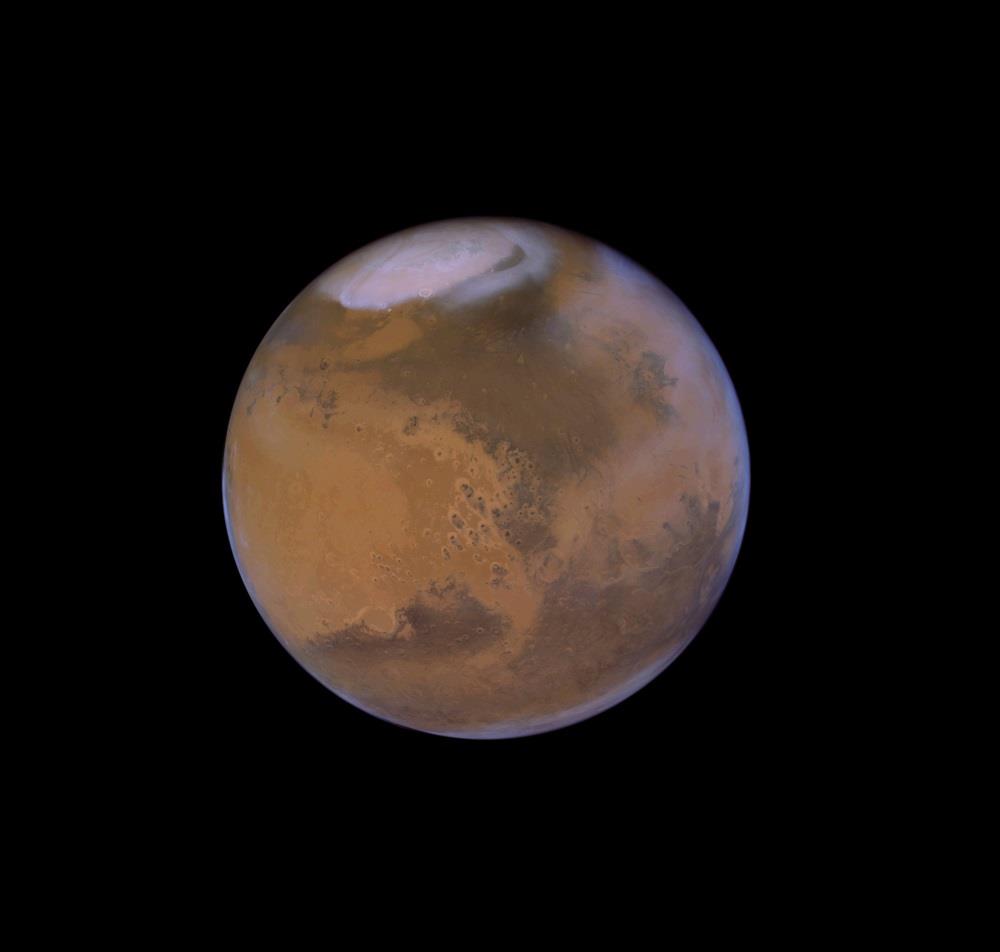
Twitter Lights up With Mars Images
(MENAFN- Mid-East.Info) Dubai, UAE: The Emirates Mars Mission, the first interplanetary exploration undertaken by an Arab nation, released its first full science data set on 1 October 2021, including data from its three instruments – observations made by the Mars Hope probe as it orbited the Red Planet between 9 February to 22 May 2021.
The data release has resulted in an unforeseen but most welcome consequence – enthusiasts around the world have been downloading image data from the EXI (Emirates Exploration Imager) imaging system and processing their own images of Mars using the high resolution, multispectral image output from the instrument.
“ We have been very pleased seeing the Mars images captured by Hope probe being shared over Twitter by the local and international community. The diverse range of treatments of the EXI images has opened up new views and perspectives,” commented Emirates Mars Mission science lead Hessa Al Matroushi.
The EXI camera is capable of taking high resolution images and is being used to measure properties of water, ice and ozone in Mars' atmosphere. EXI was developed at the University of Colorado Boulder, in collaboration with the Mohammed bin Rashid Space Centre. Some 500 EXI images are included in the first data release, with thousands more expected with the next release in January 2022.
In the first ten days of the data release some 2 terabytes of information has so far been downloaded from the Science Data Centre at the EMM website, of which 1.5 terabytes is EXI data.
“EXI has already surpassed our expectations and its first observations have been taking place throughout the Martian cloudy season. We know that, during this time – spring and summer in the Martian northern hemisphere, a belt of clouds forms near the equator. We're now able to see daily changes and are building a library that will allow us to measure seasonal changes in the dynamics of those cloud formations.” Said Matroushi.
The Emirates Mars Mission is studying the relationship between the upper layer and lower regions of the Martian atmosphere, giving the international science community full access to a holistic view of the Martian atmosphere at different times of the day, through different seasons.
The Mission's Hope Probe is following its planned 20,000 – 43,000 km elliptical science orbit, with an inclination to Mars of 25 degrees, giving it a unique ability to complete one orbit of the planet every 55 hours and capture a full planetary data sample every nine days throughout its one Martian year (two Earth year) mission to map Mar's atmospheric dynamics.
EMM and the Hope probe are the culmination of a knowledge transfer and development effort started in 2006, which has seen Emirati engineers working with partners around the world to develop the UAE's spacecraft design, engineering and manufacturing capabilities. Hope is a fully autonomous spacecraft, carrying three instruments to measure Mars' atmosphere. Weighing some 1,350 kg, and approximately the size of a small SUV, the spacecraft was designed and developed by MBRSC engineers working with academic partners, including LASP at the University of Colorado, Boulder; Arizona State University and the University of California, Berkeley.
The Hope Probe's historic journey to the Red Planet coincides with a year of celebrations to mark the UAE's Golden Jubilee.
About the Emirates Mars Mission :
Announced in July 2014 by the UAE President His Highness Sheikh Khalifa Bin Zayed Al Nahyan, and His Highness Sheikh Mohammed bin Rashid Al Maktoum, Vice President and Prime Minister of the United Arab Emirates and Ruler of Dubai, the Emirates Mars Mission has been developed by the Mohammed Bin Rashid Space Centre (MBRSC), in conjunction with its knowledge transfer partners and funded by the UAE Space Agency.
Conceptualized to disrupt and accelerate the United Arab Emirates' space sector through shaping a scientific community, and boosting space education in the country, the Probe aims to build the first full picture of Mars's climate throughout the Martian year.
The Hope Probe reached Mars orbit in 2021, the 50th anniversary of the foundation of the UAE, which became an independent nation on December 2, 1971.

Legal Disclaimer:
MENAFN provides the
information “as is” without warranty of any kind. We do not accept
any responsibility or liability for the accuracy, content, images,
videos, licenses, completeness, legality, or reliability of the information
contained in this article. If you have any complaints or copyright
issues related to this article, kindly contact the provider above.

















Comments
No comment